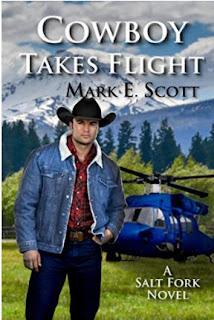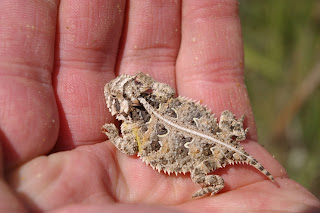Let the Good Times Roll - Salamanders, Skinks, Snakes, and Turtles
This is my first posting in several years. Both Mark and I were busy with other activities. A recent question from a reader about frogs in the Pensacola area reminded me that I needed to add more postings.
Mark had spinal surgery last year, so our herpetological activities have been limited.
In this posting, I have condensed Mark’s journal from a trip that we took to the New Orleans area in 2017.
Gulf Coast Toad
Ribbon Snake
April 20, 2017 - Thursday
This day, we hiked the Pearl River Wildlife Management Area, a mere five miles from the Inn. The Pearl River WMA was located shy of the actual river and the highlight were 3 graveled hiking roads. The WMA is used primarily for feral hog hunting, turkey hunting, and deer hunting. We were warned heavily that the wild sows were dangerous when protecting their young. Although I have a gift for running into wild turkey, I have never run into a feral pig in Florida, Georgia, or Alabama, and Louisiana was to be no different.
We hiked through a meadow, where I spotted a five lined common skink, male. Not a new sighting, the male has a vivid stripe pattern whereby bright blue tail stripes stream upward changing into orange-brown stripes. The stripes contrast against a black dorsal background. Try as I might, the skink circled the tree, and I was unable to get a photo. Using Jeanie’s presence, she was asked to spook the skink back toward me. It didn’t work, the skink dove into a knot hole.
Moving on further, an overturned log yielded a “lifer,” a never before seen species. Among the glutinosus Slimy salamander family, all the suborders had been divided into 13 species. This particular fellow was the Mississippi Slimy Salamander. The dorsum sports tiny white spots against a jet-black coloration. The rib lines were noticeable, and the underbelly was a charcoal gray. Regionally, this specimen had to be the plethodon Mississippi. Kudos go to Jeanie for personal bravery, and willingness to model the slimy salamander in order to catch the sunlight. Three photos against the green butterfly net were taken, before our able bodied slimy squiggled away. One noticeable aspect of aging is that my quick herp catching hustle isn’t what it used to be. But then again, I only do this about twice a year. Excuses, excuses.
We cruised down Oil Well Road looking for snakes on the move. The swamps were at high water due to released dam outflow. Eventually, our road was blocked by flooding. However, we may have seen a River Cooter, large female, Pseudemys Concinna. Both the Cooter and Painted large females become dark with age, sporting a blackish dark green carapace. The only way to tell them apart is by the yellow neck stripes, and a really good photo. Hence, the big female which looked like a black turtle helmet remains a mystery. Her rear end was facing us, and finally she plopped off her log.
Each meal seemed richer than the next, which meant we needed to do some more hiking. Since the Southside Café was fairly close to the Big Branch March WMA, we opted for that destination. A WMA manager claimed to have spotted a Louisiana pine snake along the Boy Scout Trail. If so, it was probably a state record.
We had inadequate WMA maps, and ended up traveling down Route 433 directly into the marshlands where the Lake Pontchartrain brackish water meet the flowing green marsh grass. Numerous families baited chicken drumsticks on a rope, and cast for Blue crab. One family had reeled in 10 blue crab. No one was interested in turtles, specifically the diamondback terrapin turtle. The terrapin definitely lives along the north shore. When commercial crabbers cast their pots, the baskets are designed to allow terrapins to escape. Thus, the subject of terrapins is a sore point. No one wants to admit to ever seeing one.
Returning to the main highway, we found a sign to the Boy Scout Trail, one of the longer boardwalks through a healthy lily pad cypress swamp. Historically, fire or Katrina killed the central cypress trees, but the swamp still flourished. Jeanie spotted a small male Southern painted turtle, chrysymus dorsalis. This was our second lifer because all former southern painted turtles didn’t count. They were pets or improperly released chelonians, not living in their true habitat.
Hearing the pig grunting call of a pig frog, we spotted a floating amphibian next to a pad. The photos came out well. The pig frog has a more pointed head than the more famous bullfrog. If it weren’t for the pig grunting calls between two males, I wouldn’t have been able to identify the species.
I had learned to hike with my zoom lens on “P” for pre-programmed and manual focus at the ready. Walking with the zoom extended and cap off, the photo could be taken the moment I spotted a specimen 10 feet away. That is also outside the disturbance zone of most species. Both the painted turtle and pig frog allowed several shots before submerging. My new system was working.
Even though my new camera system had yielded some good results, it failed to capture a chorus frog or cricket frog that leaped on a lily pad. The tiny frog was so small that by the time I pulled him into focus, he leaped into the morning. The shot was from 12 feet away. Really too bad because half the local chorus frogs and half the local cricket frogs would have been new lifers. Oh well.
On our approach to the Boy Scout boardwalk, we spotted a Northern American Racer. I always like to catch a snake for good photo ops. The snake was really moving, and our Nissan fought my exodus. I had to unlock my seat belt and turn off the engine before the door release would activate. I was momentarily trapped in the car while the snake escaped. Safety features have gotten out of control. Back in the day, road cruising with a car like this would have been horrible.
April 21, 2017 - Friday
Morning - Logtown herping trail famed for cottonmouth, copperheads, hognose, pygmy rattlers, all my favorites, but didn’t see any of them.
Afternoon - Kayaked through a branch of the Pearl River, and a cypress swamp. Photographed 6 snakes.
With scant directions for the Logtown trail, we set off for the Logtown Cemetery. At the cemetery, there were old growth live oak with healthy strands of Spanish moss. I’m not entirely certain if I’ve seen Spanish moss on my adult vacations. It was a glorious morning, and the trail was fresh with dappled sunlight. Palmettos and sapling sized trees flanked the boardwalk. We crossed an arching foot bridge and photographed a River Cooter, pretty sure. Only the photos and an examination of her neck stripes will determine her identity for certain. I won’t call the River Cooter a new species for me because we saw an incredible number of cooters in Florida. The Latin name tells the real differentiation.
Cooter
Spotted a reddish-bronze headed female five lined skink, the dimorphic female form. Jeanie had spotted several bronze headed skinks on our Pensacola trip, but this time, I had the honors.
That afternoon, we took the Honey Island Kayak tour. Jessica Gauley led us down the riverways and into the cypress swamps. Raised on a river boat, she had an intimate first-hand knowledge of all things riparian.
I took photos of a female diamondback water snake, turtles, and egrets. It was an enjoyable and educational trip. Afterwards, we enjoyed alligator boudin sausage.
For more information about Honey Island Kayak tours, visit the Web site: https://www.honeyislandkayaktours.com/
Female Diamondback Water Snake
Egret
Photo from Honey Island Kayak Tours Web site
Mark’s Novels
Thank you for reading my blog.
Side note: If you are interested in fantasy romances or Western romances, check our Mark’s novels. They are on Amazon and Barnes and Noble:
Amazon: https://www.amazon.com/Mark-E-Scott/e/B086PQBLP3?ref=sr_ntt_srch_lnk_1&qid=1600035877&sr=8-1
Barnes and Noble: https://www.barnesandnoble.com/s/%22Mark%20E.%20Scott%22?Ntk=P_key_Contributor_List&Ns=P_Sales_Rank&Ntx=mode+matchall













